General Finishes Enduro Sanding Sealeris a clear undercoat that forms an easily sandable foundation over raw wood or an unsealed stained surface.
Sanding Sealer is not recommended as a final finish because it is not as durable as a topcoat. Seal Sanding Sealer with any General Finishes water-based topcoat, EXCEPT original formula of General Finishes Enduro-Var.
However, the new formulation (Enduro-Var II) with renewable resources is compatible with all GF products), for improved water and chemical resistance.
Caution: Do NOT use any clear topcoat over bright whites as it may cause yellowing.
General Finishes Enduro Sanding Sealer Application Steps
- Watch product overview video here.
- Work in a well-ventilated area.
- Stir Enduro Sanding Sealer thoroughly to reincorporate solids that have settled to the bottom of the can before and throughout the application process. Do not shake.
- Test for adhesion when applying over an existing finish.
- Thin as desired with distilled water; start with 5%, adding up to 10% by volume.
- Increase open time, if needed, with10-15% General Finishes Extender if allowed by local regulations. GF Extender will improve flow and leveling and increase open time, which is helpful in dry climates. California Residents: Adding more than 2% of GF Extender will make the products non-compliant per SCAQMD Regulations. GF assumes no liability for the improper use of these products.
- Apply 1-2 coats. We recommend no more than 2 coats.
- Hand application: Enduro Sanding Sealer is engineered to spray but can be applied successfully applied by hand. Apply a liberal amount using a synthetic bristle or foam brush, pad applicator, or roller with smooth, even strokes & light lap lines. Avoid heavy pressure & back-brushing. Lap lines will tighten down as they dry.
- Spray Application: Ready to spray from container. Before spraying, strain topcoat through a fine-mesh filter. Spray wet films at 3-5-mil thickness. Medium air cap. Compressed air: .040, HVLP: .043-.051 or Airless: .009-.123 . Verify tip sizes with your equipment supplier. See our spray tip size recommendations here. Keep your gun at a 90° angle, 6-8″ from the surface. On large, flat areas, use wet, even patterns 6-8″ wide. For narrow surfaces, reduce the fan pattern to 2-3″ wide to reduce overspray. Overlap each pass 25% to conceal lines. Wear a full filter respirator (NIOSH/MSHA approved) and work in a ventilated space.Finish sand between coats with a fine-grade (220-320) foam sanding pad or 400-grit sandpaper to improve smoothness and adhesion.
8. Sand lightly between coats with 220-320-grit sanding sponge.
9. Remove dust with a vacuum, compressed air, an oil free tack cloth or water-dampened rag.
10.Apply topcoat.
Benefits of using Sanding Sealer
You can substitute your first coat or two of topcoat with less-expensive Sanding Sealer. This also saves time because it is easier to sand and dries faster than topcoat.
- It makes a strong barrier coat when working with existing finishes.
- The resin particle is also larger, so the finish “builds faster” (how thick it looks).
- It has strong adhesion properties. Sanding Sealer does not stop tannin or dye bleed-through, but it does improve adhesion.
- Sanding sealer dries to the touch in 10-20 minutes in ideal conditions of 70˚F/21˚C; 50% humidity.
- Example of use:
- Apply 1 coat of Sanding Sealer; finish sand before applying topcoat.
- Apply 1 coat of Sanding Sealer; finish sand before applying paint.
MDF: Sanding Sealer can be used on MDF, but the better choice would be White Undercoat or Stain Blocker. Both build faster and would probably require one less coat than Sanding Sealer.
Warning: Do not use water-based products with Linseed Oils or Danish Oils.


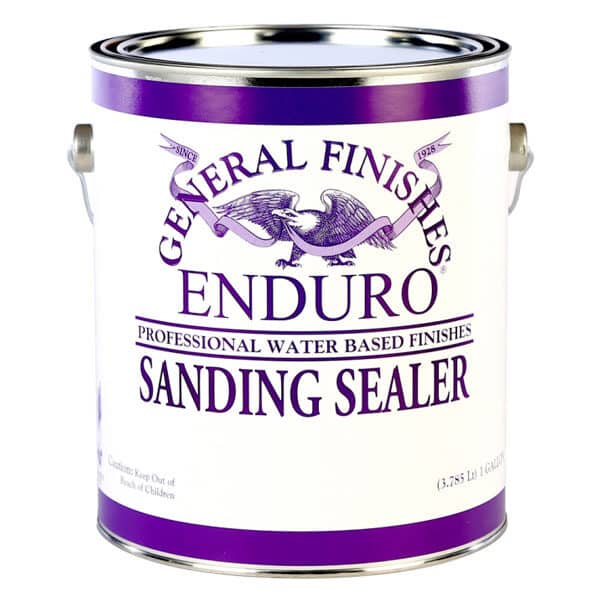

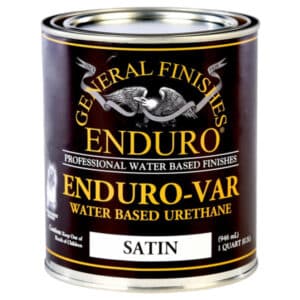
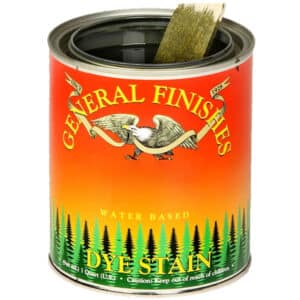
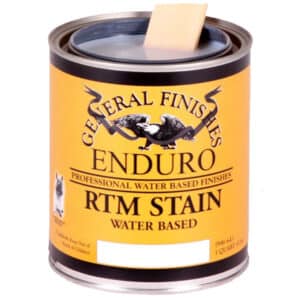
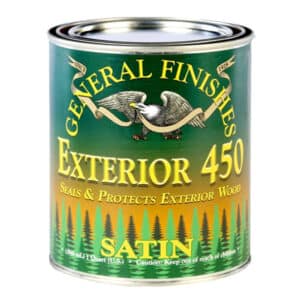
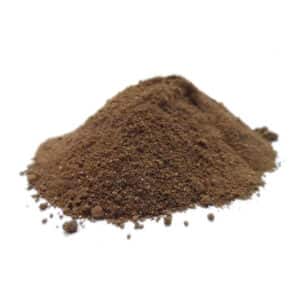
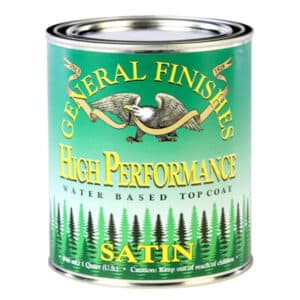

Reviews
There are no reviews yet.